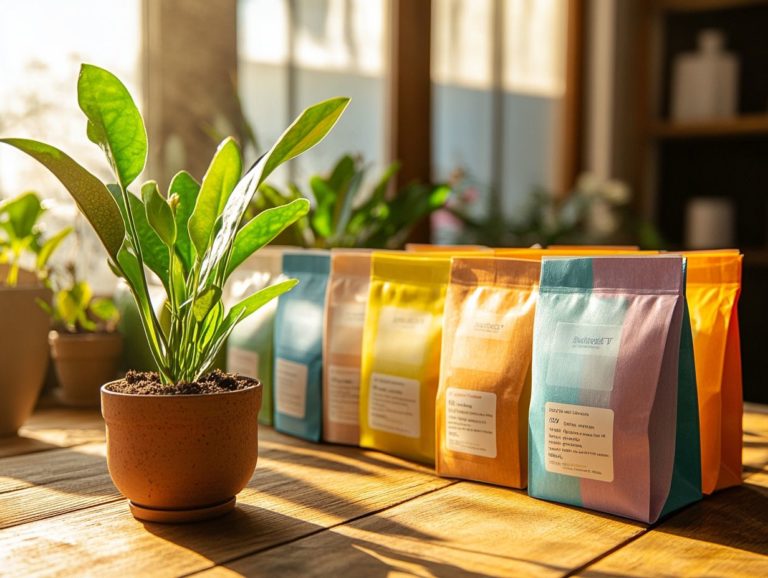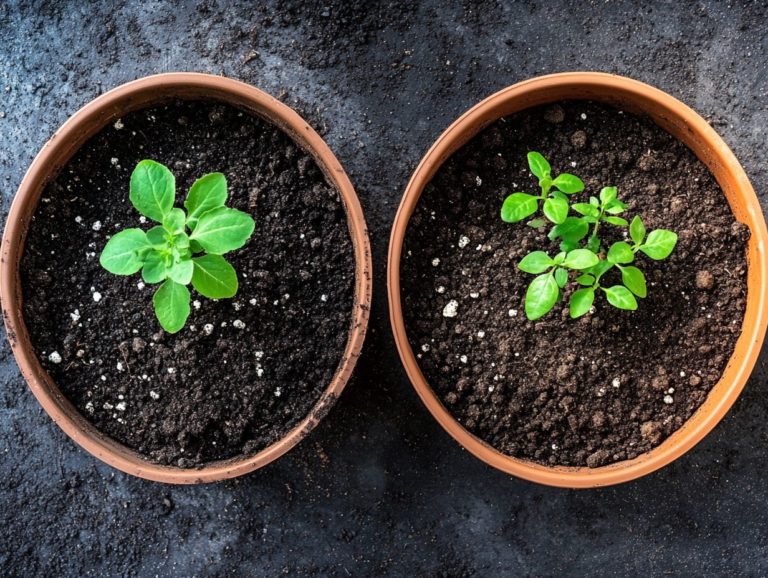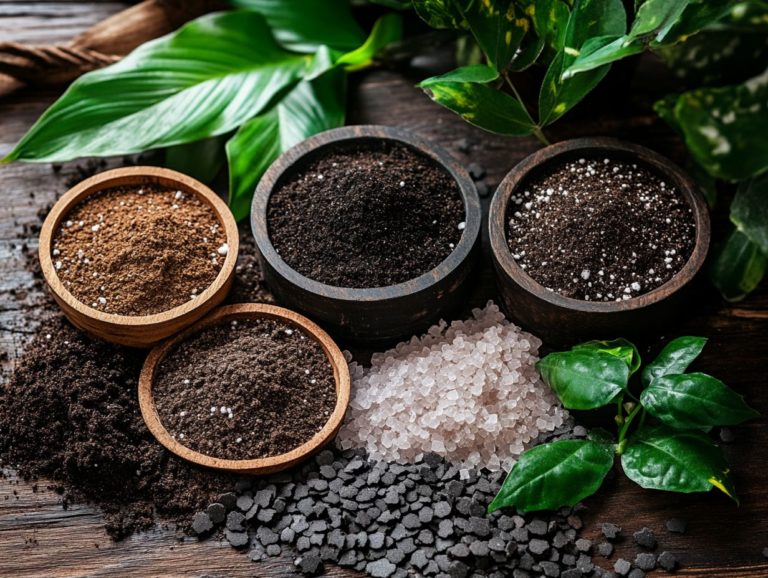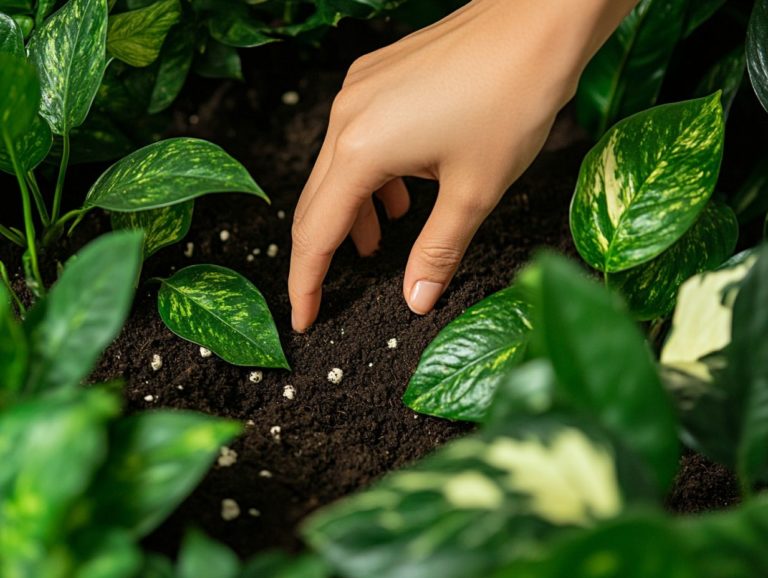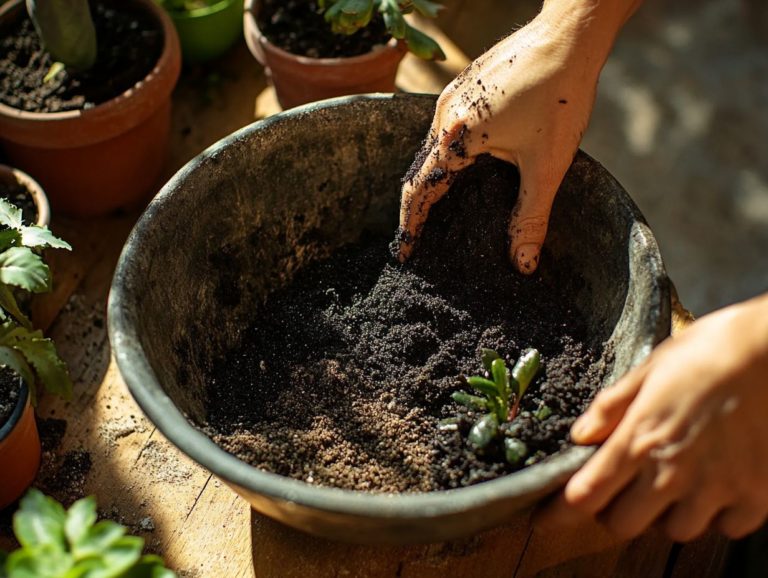The Benefits of Mulching Indoor Plant Soil
Mulching is not merely a gardening technique; it s an essential practice that can greatly enhance the health of your indoor plants.
By applying a layer of material over the soil, you can improve soil quality, reduce your watering needs, and keep pesky weeds and pests at bay.
This article explores the many benefits of mulching for indoor plants, outlines different types of mulch to consider, provides a step-by-step guide to the mulching process, and offers tips for effective maintenance.
Whether you re a seasoned plant lover or just starting your green journey, mastering the art of mulching can elevate your indoor gardening experience.
Contents
- Key Takeaways:
- What is Mulching?
- The Benefits of Mulching Indoor Plant Soil
- Types of Mulch for Indoor Plants
- How to Mulch Indoor Plant Soil
- Tips for Maintaining Mulch
- Common Mistakes to Avoid
- Frequently Asked Questions
- What is mulching and why is it beneficial for indoor plant soil?
- What materials can be used for mulching indoor plant soil?
- How does mulching help to retain moisture and regulate soil temperature in indoor plant soil?
- Can mulching help to prevent weed growth in indoor plant soil?
- Are there any additional benefits to mulching indoor plant soil?
Key Takeaways:
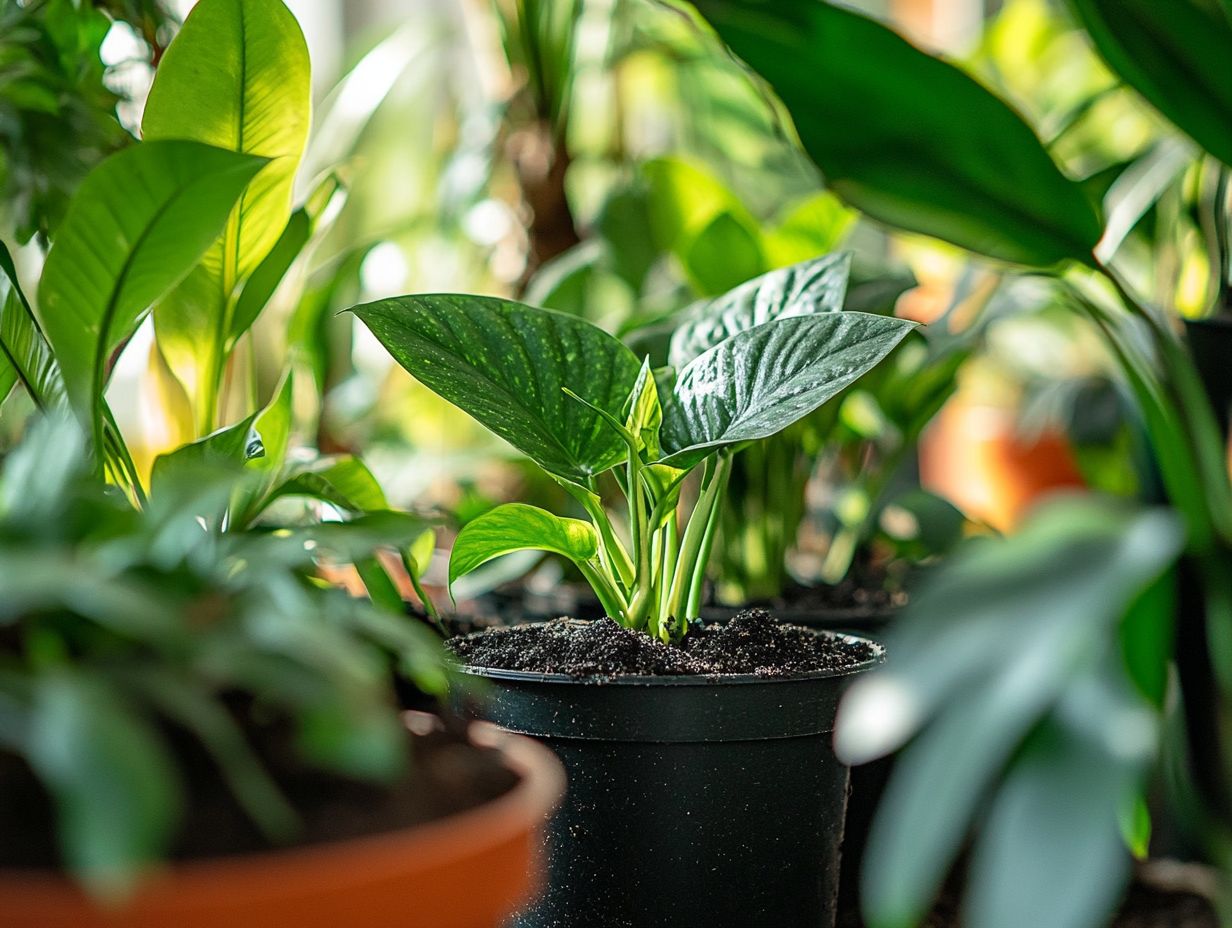
- Mulching improves soil quality, reduces watering needs, controls weeds, and prevents pests in indoor plants.
- Use either organic or inorganic mulch for indoor plants; popular choices include bark, compost, and peat moss.
- Keep your mulch fresh and avoid common mistakes to help your plants thrive!
What is Mulching?
Mulching involves covering the soil with various materials to boost the growth and vitality of your indoor plants. This technique offers numerous benefits, such as retaining moisture, suppressing weeds, and regulating soil temperature.
Whether you aim to create an ideal habitat for tropical plants or enhance the visual appeal of your indoor garden, incorporating mulch is a key factor in achieving these goals.
Why Mulch is Essential
Mulching enhances both plant health and aesthetic appeal in your indoor gardening efforts. It improves moisture retention, which is vital for keeping your indoor plants well-hydrated.
Mulch also acts as a protective layer, shielding the soil from temperature fluctuations, preventing erosion, and creating an insulating barrier that helps preserve nutrient content.
It effectively suppresses weed growth, minimizing competition for valuable resources. When selecting mulch materials, you have many options. Organic choices, like wood chips or straw, break down over time to enrich the soil, while inorganic alternatives, such as gravel or plastic, offer durability and low-maintenance benefits. Together, these options foster an environment where your plants can thrive.
The Benefits of Mulching Indoor Plant Soil
The advantages of mulching indoor plant soil are plentiful. It enhances soil quality, reduces the frequency of watering, and provides effective weed control. This practice is essential for anyone who truly values their indoor gardening experience.
Improved Soil Quality
Improving soil quality through mulching is your ticket to ensuring that your indoor plants flourish in rich soil full of nutrients.
This technique not only conserves moisture preventing the soil from drying out too quickly but also creates a habitat that encourages healthy microbial activity. By using organic materials as mulch, you can significantly boost nutrient availability, as decomposing matter naturally fertilizes the soil.
The protective layer of mulch serves as a buffer against temperature changes, creating a more stable environment for your diverse plant species. Ultimately, this holistic approach to soil management supports healthier plants that are more resistant to pests and diseases, contributing to vibrant indoor greenery for you to enjoy.
Transform your indoor garden with the power of mulching your plants will thank you!
Reduced Watering Needs
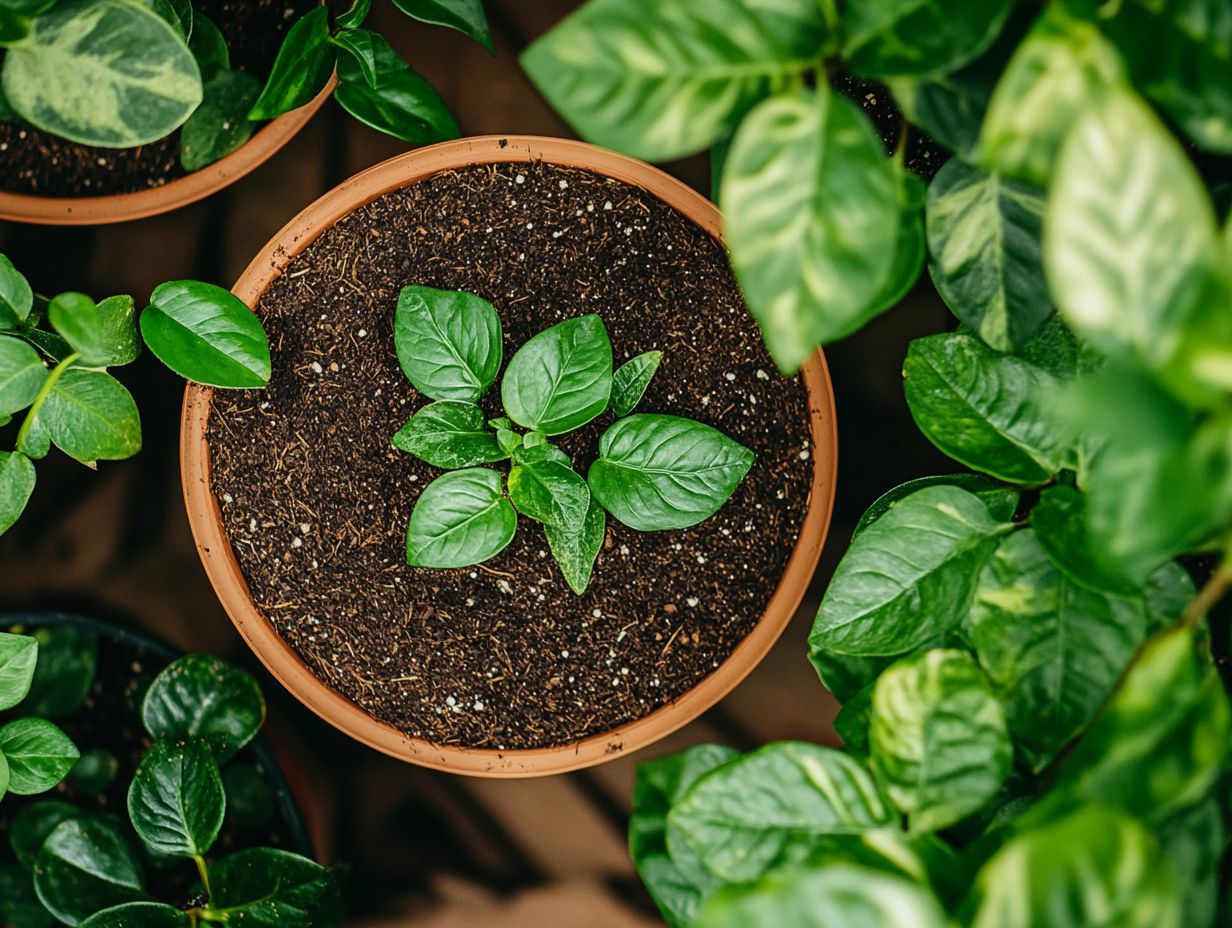
Reduced watering needs are one of the key advantages of mulching. It significantly minimizes moisture loss and evaporation from the soil surface.
This practice helps conserve water and ensures that your plants maintain a consistent moisture level, essential for their health and growth. Different mulch materials like straw, wood chips, or shredded leaves vary in their moisture retention capabilities.
For example, organic mulches improve soil structure over time, enhancing both water infiltration and retention. As a result, you’ll create a more favorable environment for root development and nutrient uptake, allowing your plants to thrive with less frequent watering.
Ultimately, your choice of mulch can be crucial in maintaining optimal soil conditions, benefiting your landscape and the broader ecosystem.
Weed Control
Weed control is essential in your gardening journey. Using mulch effectively can drastically reduce weed growth in your indoor plant setups while ensuring optimal moisture retention.
By selecting different types of mulch, you can create an environment that deters weeds and enhances the visual charm of your space. Organic mulches like wood chips, straw, and shredded leaves block sunlight from reaching weed seeds and improve soil quality as they break down.
In contrast, inorganic options like landscape fabric or gravel act as a robust, long-lasting barrier, effectively preventing weeds from sprouting. These materials not only suppress weeds but also create a more organized and inviting garden, showcasing your plants beautifully.
Pest Prevention
Pest prevention becomes easier with the strategic use of mulch, effectively deterring unwanted pests from your indoor garden.
This method keeps troublesome insects at bay and creates a healthier environment for your plants by regulating soil moisture and temperature. Organic materials like cedar chips and pine bark act as natural deterrents, releasing aromatic oils that repel many pests.
By creating a protective barrier, mulching reduces the need for chemical interventions, allowing you to embrace a more organic approach to indoor gardening. Consequently, the overall health of your plants improves, leading to vibrant growth and a fulfilling gardening experience for you!
Types of Mulch for Indoor Plants
Understanding the various types of mulch suitable for indoor plants is crucial for developing a well-rounded gardening strategy. Your choices span a range of materials, from organic to inorganic, each with unique benefits to enhance your indoor garden s health and vitality.
Organic vs. Inorganic
Choosing between organic and inorganic mulch is a pivotal decision for indoor gardeners. Each option presents advantages and drawbacks, especially regarding soil protection.
Organic mulch, such as coconut coir, boosts moisture retention in your soil and improves its health over time by breaking down and contributing valuable nutrients. In contrast, inorganic mulch options, like decorative pebbles, offer a long-lasting solution, effectively aiding in moisture conservation.
While organic varieties enrich your soil, they may attract pests a concern worth noting. Inorganic options enhance your space s aesthetics with their polished appearance, though they typically lack the nourishment that organic materials provide.
Balancing cost-effectiveness is crucial; organic mulches might seem budget-friendly at first but often require more frequent replacement compared to the durability of inorganic counterparts.
Don t wait any longer start mulching today! Implement these techniques in your garden for maximum effect.
Popular Types of Mulch
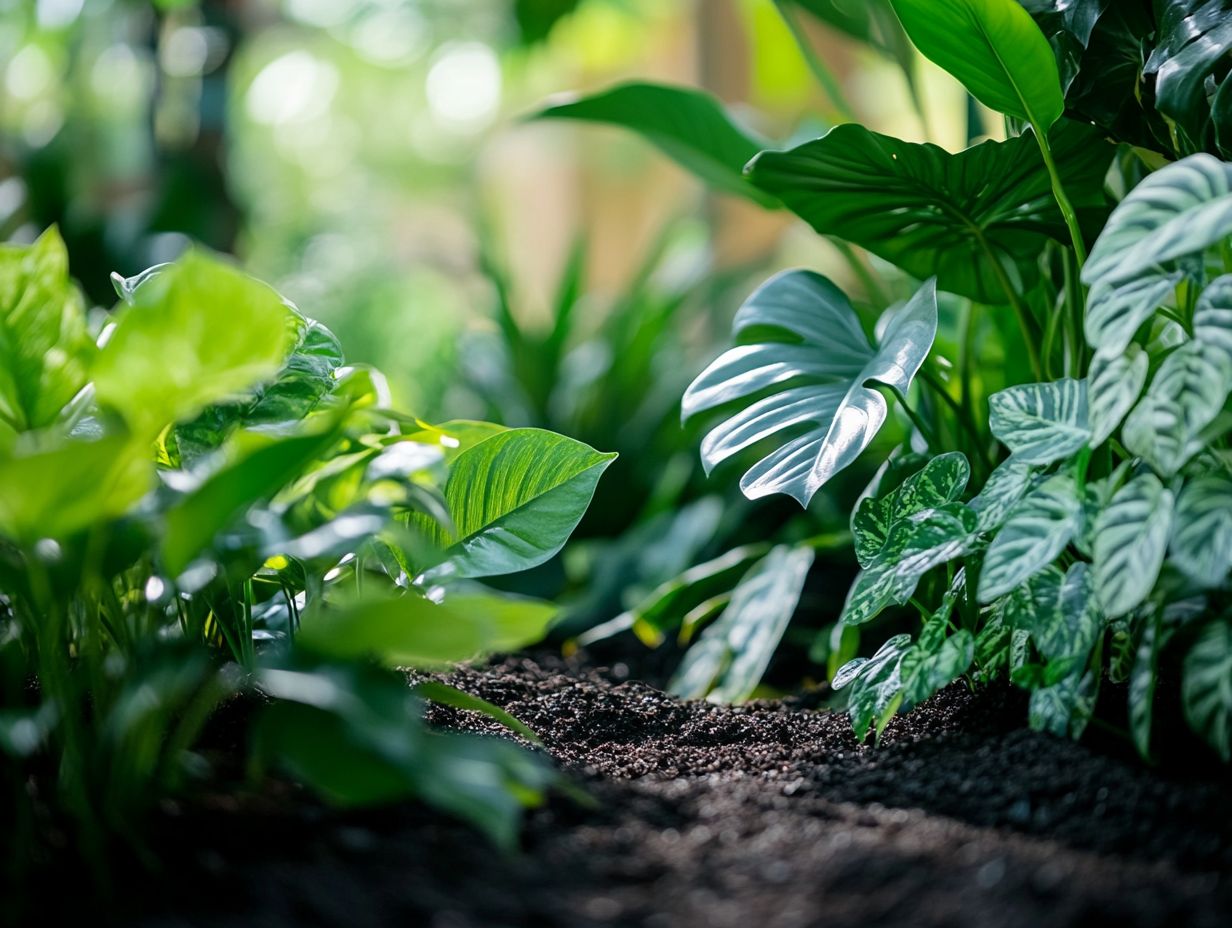
Some popular types of mulch for your indoor plants include medium bark mulch, hemlock bark, and decorative gravel. Each brings its own unique benefits to both plant health and visual appeal, making them ideal for refined indoor gardening.
By significantly enhancing moisture retention, these mulches play a crucial role in maintaining a consistent humidity level in the soil, which is key to your indoor gardening success. For example, medium bark mulch not only locks in moisture but also helps prevent weeds and fungal diseases, creating a healthier environment for your plants to flourish. Understanding why soil quality matters for indoor plants is also essential for optimal growth.
On the flip side, hemlock bark comes with natural pest-repelling properties, making it an excellent choice if you prefer to steer clear of chemical treatments. Decorative gravel offers a visually striking finish while improving drainage, providing a polished look to your indoor setup without compromising plant health.
How to Mulch Indoor Plant Soil
Proper mulch application is essential for maximizing the benefits it offers to your indoor plant soil. This creates an optimal environment for your cherished plants.
By applying mulch thoughtfully, you enhance moisture retention, regulate temperature, and suppress weeds. All of these contribute to the health and vitality of your indoor greenery, ensuring a perfect environment for all plant species.
Step-by-Step Guide
A step-by-step guide for mulch application can be your secret weapon in ensuring your indoor plants thrive like never before, thanks to effective moisture management and soil protection.
-
Start by selecting the right mulch material think wood chips, straw, or pine needles. This choice is vital as it provides essential insulation for the soil, preventing sudden changes in temperature that can stress your beloved plants.
-
Once you ve chosen the ideal mulch, evenly distribute it around the base of your plants to a depth of about two to three inches. This technique not only helps retain moisture optimally but also promotes adequate airflow.
-
This balanced approach is crucial for keeping your soil hydrated while minimizing the risk of root rot, which can arise from excessive moisture in poorly drained conditions.
-
Don t wait! Regularly monitor moisture levels and adjust the mulch thickness as needed. This attention to detail can significantly enhance the health and vigor of your indoor plants.
Tips for Maintaining Mulch
Maintaining mulch is crucial for you to reap its full benefits in indoor gardening, elevating both the health of your plants and the overall aesthetic of your space.
Frequency of Replacement
The frequency with which you should replace mulch can vary based on the type you choose and the specific needs of your indoor plants.
Environmental factors like humidity levels, light exposure, and temperature all play a role in how quickly your mulch breaks down. For example, if your plants are basking in a bright, warm area, organic mulches may decompose more quickly, requiring more frequent replacements to maintain their benefits.
Regularly assessing the condition of the mulch is essential. Keep an eye out for signs of decay, mold, or loss of color to ensure it continues to effectively retain moisture and enhance the aesthetic appeal. Observing how well your plants respond and whether moisture is being retained can provide valuable clues about when it s time for a refresh.
Common Mistakes to Avoid
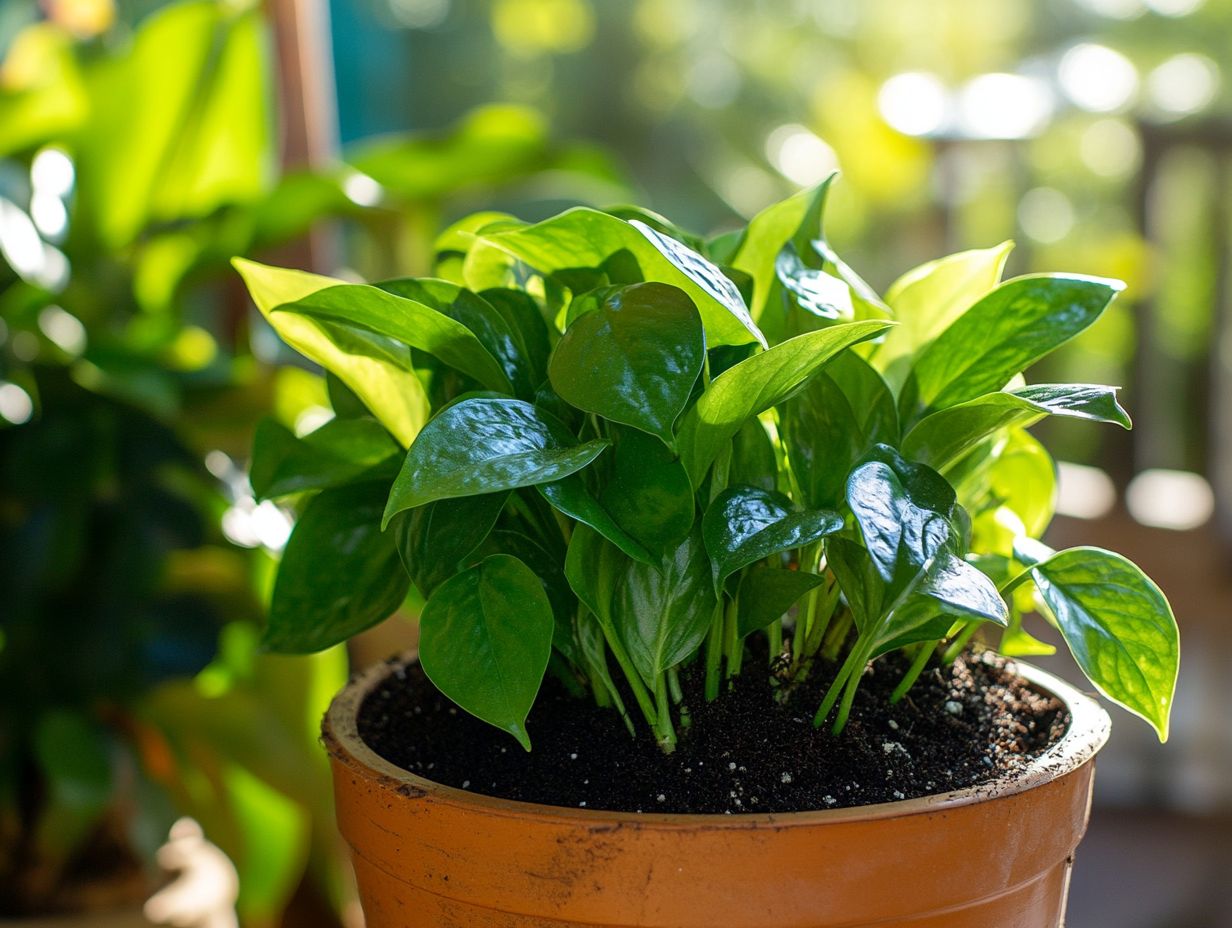
Avoiding common mistakes in mulch application is crucial. It helps ensure the longevity and effectiveness of your indoor gardening efforts.
Many indoor gardeners often find themselves caught in the trap of over-mulching. Too much moisture can suffocate roots and promote diseases. To improve drainage and aeration, consider the benefits of using perlite in indoor soil. Using unsuitable materials can hinder growth or even harm your plants.
Make it a habit to check moisture levels beneath the mulch! Your plants will thrive with the right care. To truly maximize the benefits of mulch, consider using organic materials like shredded leaves or wood chips. Aim for a layer about two to three inches thick to ensure optimal airflow while retaining the necessary moisture for your plants to thrive.
Frequently Asked Questions
What is mulching and why is it beneficial for indoor plant soil?
Mulching is the process of adding a layer of organic or inorganic material on top of soil. It helps to retain moisture, suppress weeds, regulate soil temperature, and provide nutrients for plant growth, making it extremely beneficial for indoor plants.
What materials can be used for mulching indoor plant soil?
Some common materials used for mulching indoor plant soil include compost, shredded bark, gravel, pebbles, and cocoa shells. It is important to choose a material that fits your plants’ needs.
How does mulching help to retain moisture and regulate soil temperature in indoor plant soil?
Mulching creates a barrier between the soil and the air, reducing evaporation and keeping the moisture in the soil. This is especially beneficial for indoor plants, which may not have access to natural sources of water like rain. Additionally, it acts as insulation, protecting the roots from extreme temperature fluctuations.
Can mulching help to prevent weed growth in indoor plant soil?
Yes, mulching can help to suppress weed growth by blocking sunlight from reaching weed seeds. It also prevents weed seeds from blowing into the soil and taking root.
Are there any additional benefits to mulching indoor plant soil?
Aside from moisture retention, weed suppression, and temperature regulation, mulching improves soil structure and fertility. As the mulch breaks down, it adds nutrients to the soil, promoting healthier and more vibrant plant growth.

